
Gin transformed from royal elixir to sawdustfilled poison in England
Beer Street and Gin Lane are two prints issued in 1751 by English artist William Hogarth in support of what would become the Gin Act.. they depict the evils of the consumption of gin as a contrast to the merits of drinking beer. Designed to be viewed alongside each other, they depict the evils of the consumption of gin as a contrast to the merits of drinking beer.

William Hogarth Gin Lane and Beer Street 10x12 inch prints Etsy
This prevented retail sale of gin by the shops that sold normal household necessities, and was effective in curbing the evils of spirit drinking.Beer Street celebrates the virtues of the mildly intoxicating traditional national drink. Beer inspires artists and refreshes tradesmen and labourers. It can be drunk safely on rooftops.

Hogarth Gin Lane And Beer Street
The context for Beer Street and Gin Lane was the so-called 'Gin Craze' of the first half of the 18th Century. "In 1689, an Act of Parliament banned the import of French wine and spirits.

Beer Street and Gin Lane Bath Towel for Sale by William Hogarth
'Beer Street' portrays an image of an ideal and quintessentially British society fuelled by patronage and England's own produce. In contrast, the citizens of 'Gin Lane', are shown guzzling vast quantities of gin.2 Hogarth depicts ordinary people caught up in a dysfunctional community who are seemingly unable to help themselves from reaching a chaotic state of self-destruction.

Beer Street and Gin Lane Wikipedia
Beer Street and Gin Lane are two prints issued in 1751 by English artist William Hogarth in support of what would become the Gin Act. Designed to be viewed alongside each other, they depict the evils of the consumption of gin as a contrast to the merits of drinking beer. At almost the same time and on the same subject, Hogarth's friend Henry Fielding published An Inquiry into the Late Increase.
_blog.jpg?1607800434)
A Stroll down Beer Street and Gin Lane
"Gin Lane" was created as part of a pair; its lesser-known counterpart is "Beer Street". By juxtaposing the two, Hogarth was illustrating the difference, as seen by contemporaries, between gin.

Beer Street and Gin Lane Gin 1689
The Beer Street is print is generally calmer than Gin Lane, making the scene much easier to view and certainly more pleasurable to look at, a reflection on the themes within it. Gin Lane: Hogarth has used various planes on which to view this tumultuous piece allowing him to include more drama and action without jeopardizing its three-dimensional aspects.
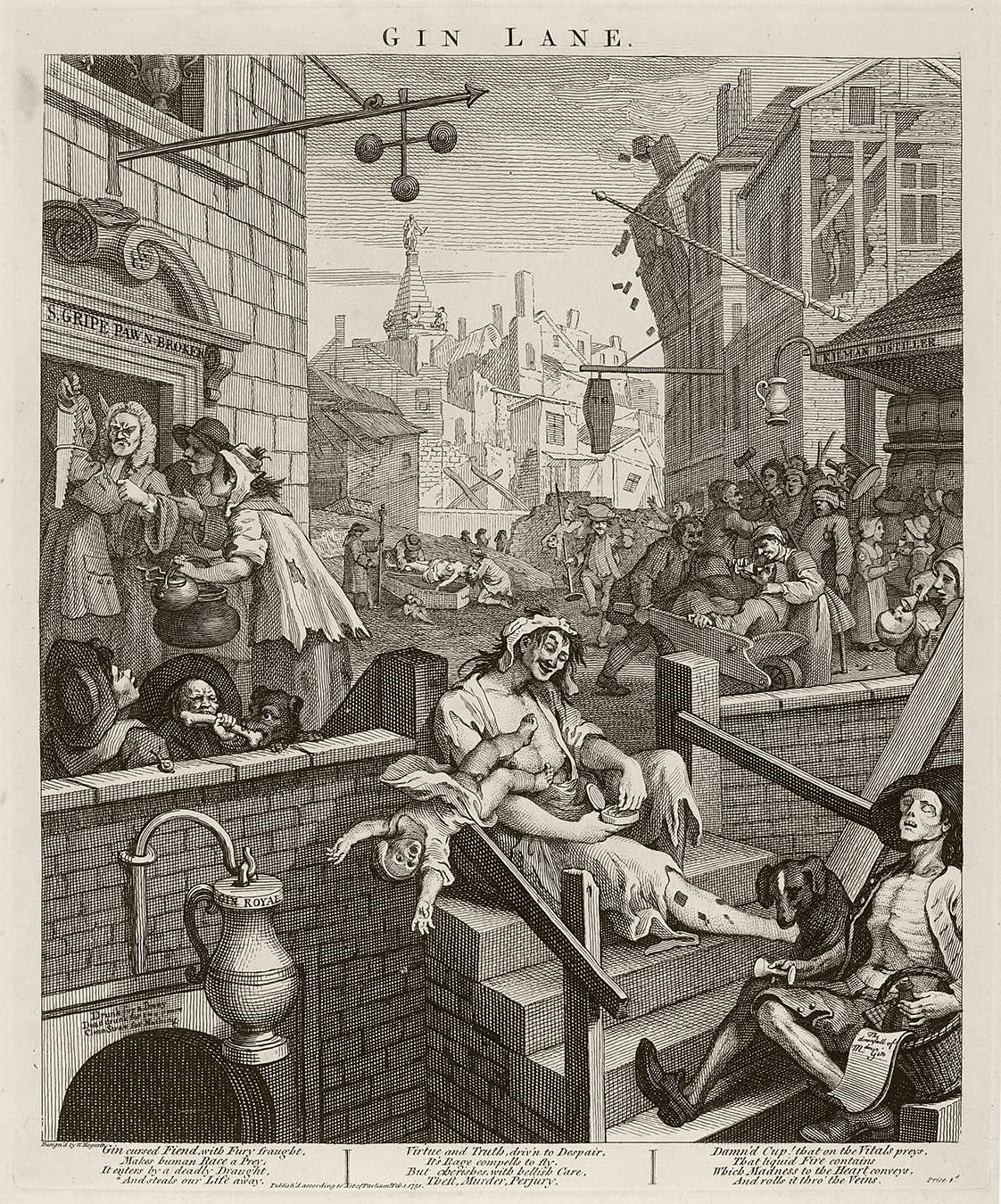
Alcohol in the 1700s Atlantic World Alcohol's Empire
Beer Street and Gin Lane (1751). Beer Street and Gin Lane are two prints issued in 1751 by English artist William Hogarth in support of what would become the Gin Act.Designed to be viewed alongside each other, they depict the evils of the consumption of gin as a contrast to the merits of drinking beer.At almost the same time and on the same subject, Hogarth's friend Henry Fielding published An.

Beer Street And Gin Lane Beer Street Greeting Card for Sale by Vintage
Hogarth's illustration of the evils of gin-drinking was published as a pair with 'Beer Street', as part of a campaign against the uncontrolled production and sale of cheap gin. It culminated in the Gin Act of 1751, through which the number of gin shops was greatly reduced. The original copperplates for both prints are now in the.
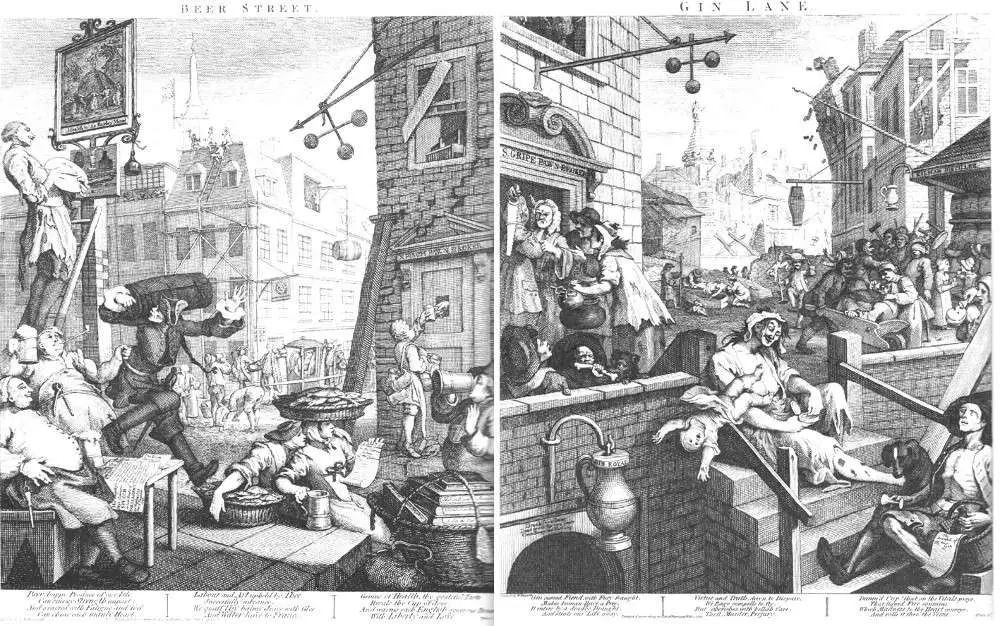
A Rhode Islander in England, 1828, Is Shocked By English Drinking
Beer Street and Gin Lane are two prints issued in 1751 by English artist William Hogarth in support of what would become the Gin Act. Designed to be viewed a.
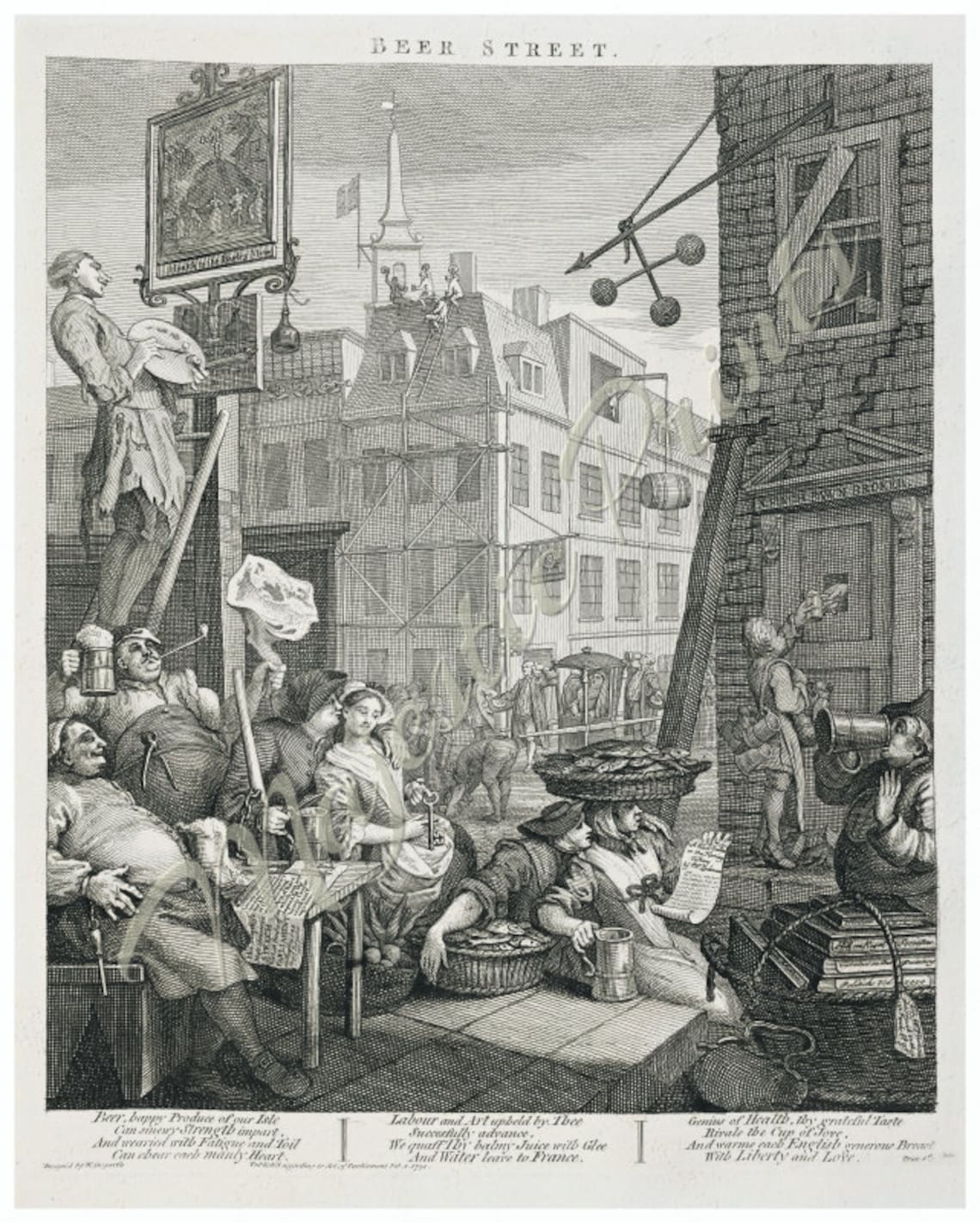
Hogarth's Beer Street Antique Art Print Bar Decor Etsy
Designed to be viewed next to one another, Beer Street and Gin Lane depict the contrasts of gin consumption versus beer consumption around the 'Gin Craze' of 18th Century England. Gin became extremely popular in England due to its low-cost, safer consumption compared to contaminated city water and its appetite suppressing qualities which were attractive to poorer families.

Rogues' Nest Historical Pirate Fiction by Nick Smith A brief history
In February of 1751, Hogarth debuted a print duo, "Gin Lane" and "Beer Street." It was well timed for the Gin Act of 1751, which effectively shuttered small gin distillers with the goal of wiping out much of the available product. "Gin Lane" captured a motley scene of poverty-stricken people in St. Giles at various stages of ruin.
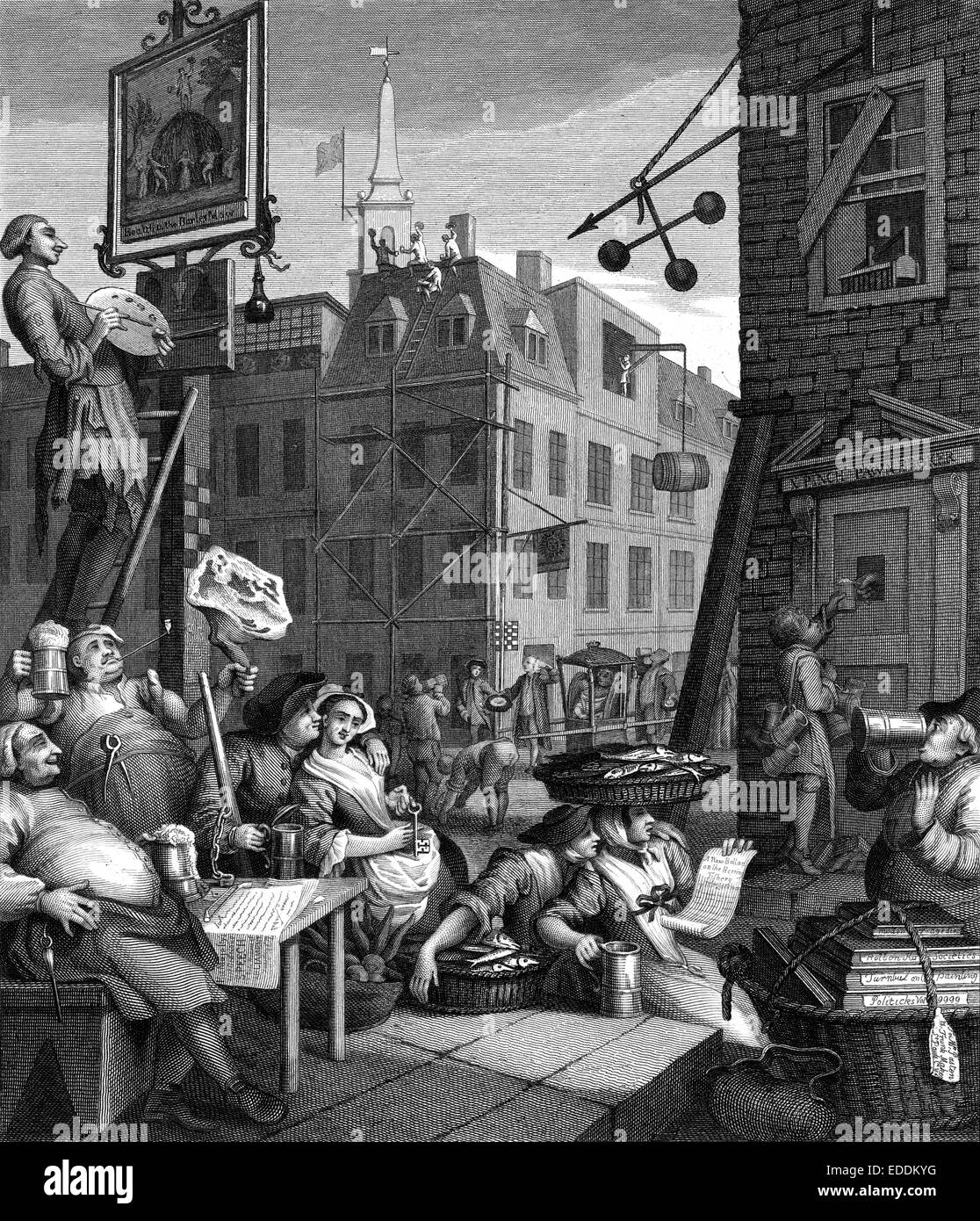
Beer Street and Gin Lane are two prints issued in 1751 by English Stock
In 60 seconds: Hogarth's 'Gin Lane' & 'Beer Street' By Tiffany Greenoak Published 6 May 2020. Learn how a pair of engravings by satirical artist William Hogarth were used to alter the drinking habits of the British public in the 18th century.
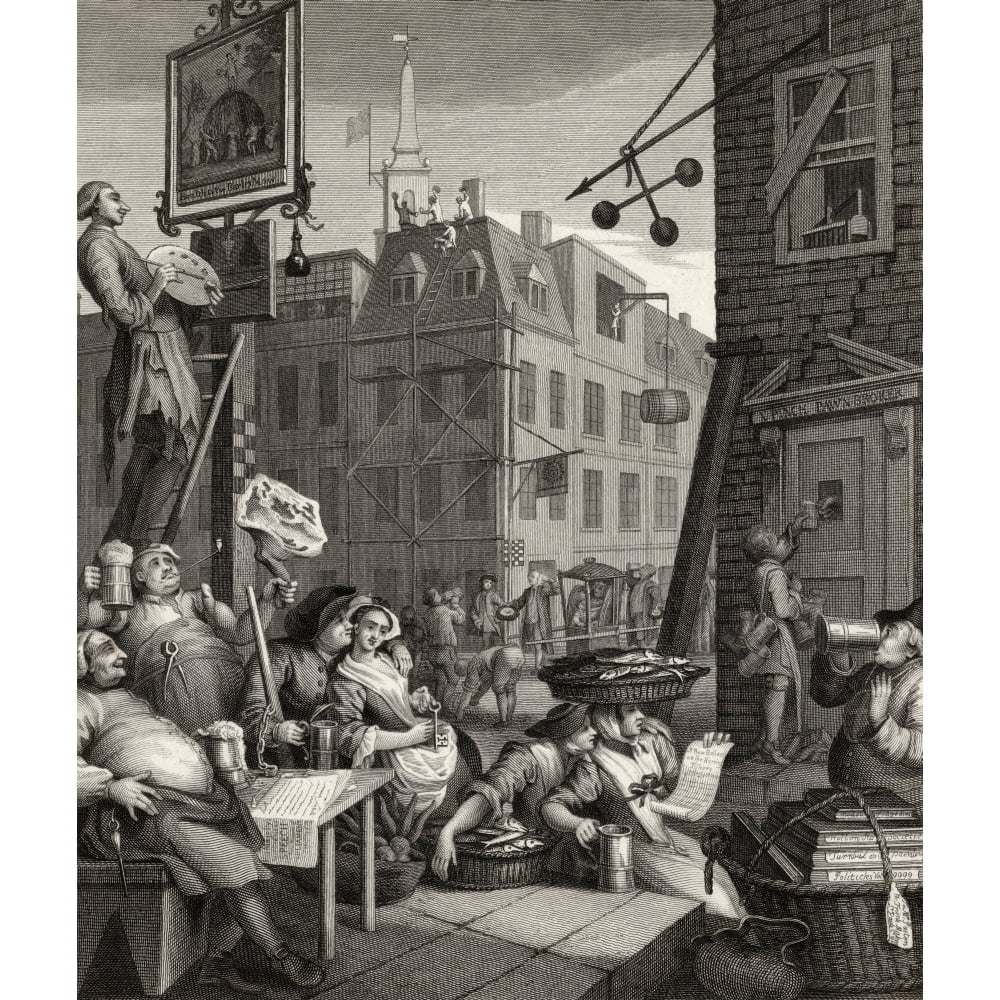
Beer Street And Gin Lane Beer Street From The Original Design By
Beer Street is one of a pair of prints, the other being Gin Lane, which William Hogarth produced in 1751. They were both responses to the government's inadequacy in tackling the social and health issues caused by excessive gin drinking. From the late 1600s onward, English, and subsequently British, governments had promoted distilling as a.
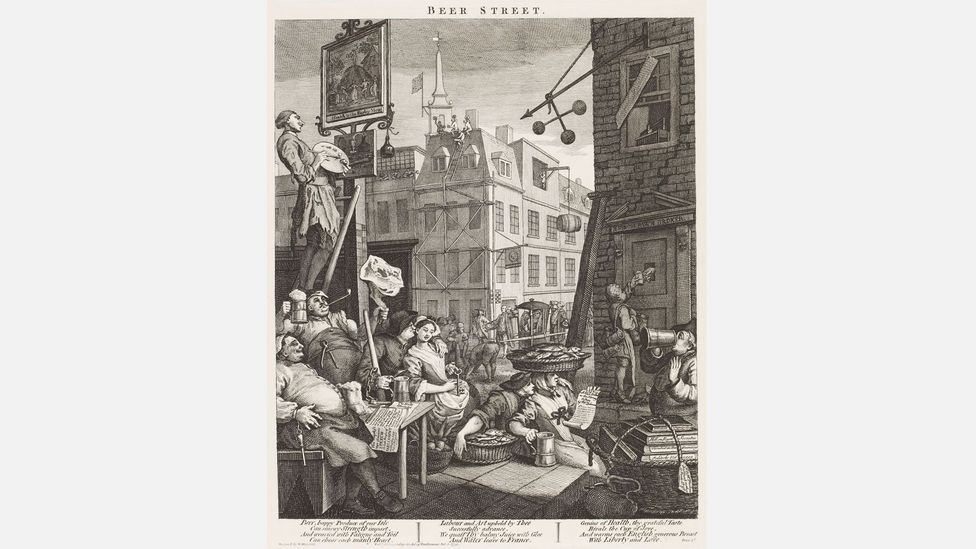
Hogarth’s London Gin Lane and Beer Street BBC Culture
Learn how a pair of engravings by satirical artist William Hogarth were used to alter the drinking habits of the British public in the 18th century. Made to.
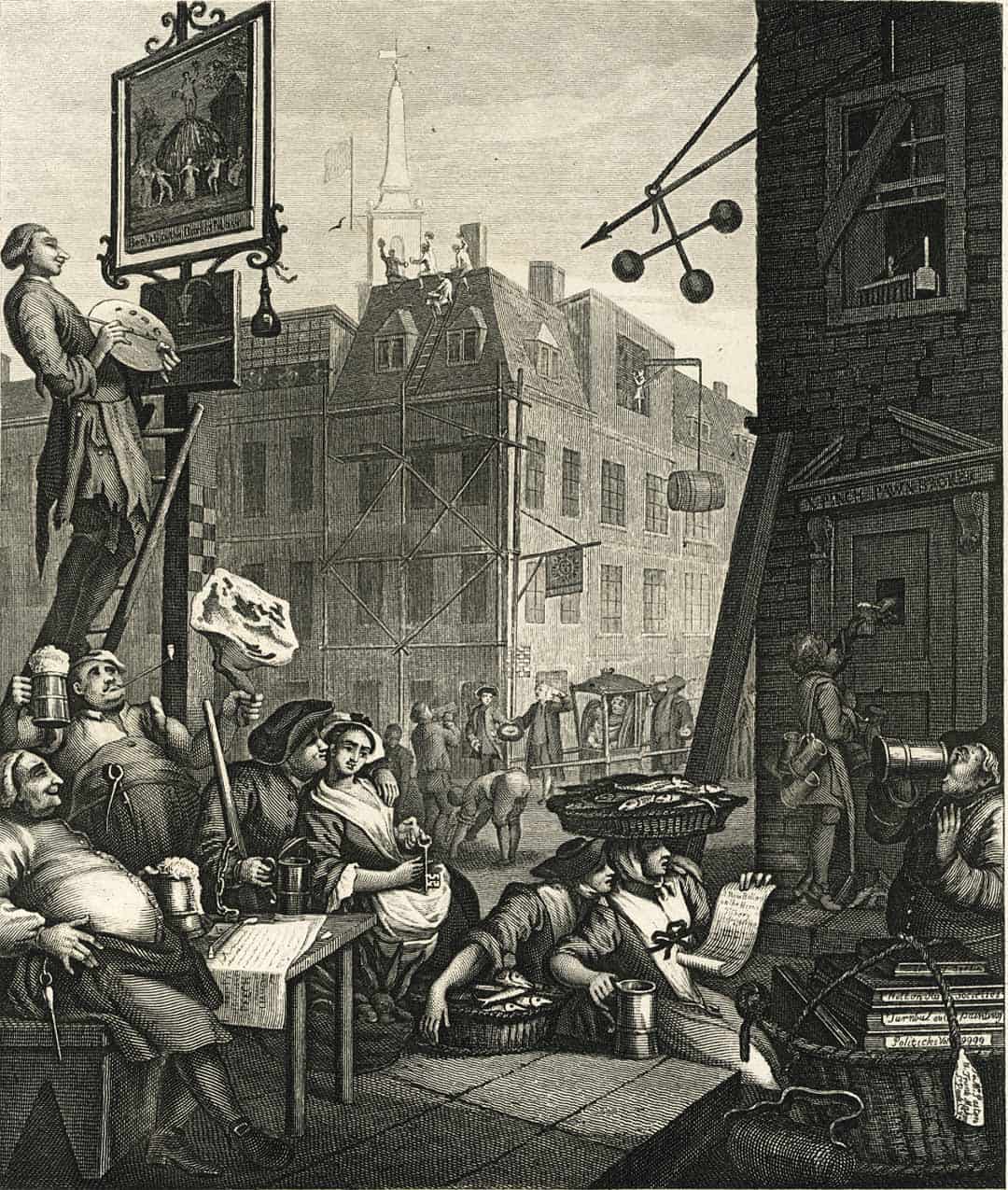
Beer Street and Gin Lane by William Hogarth Peachridge Glass
In response to a stream of petitions, perhaps the most effective being a report by Henry Fielding and Hogarth's prints Beer Street: Gin Lane, the government in 1751 passed effective legislation that led to a decrease in gin consumption to under 2,000,000 gallons by 1758. The decline of gin drinking was accompanied by a general spirit of reform.